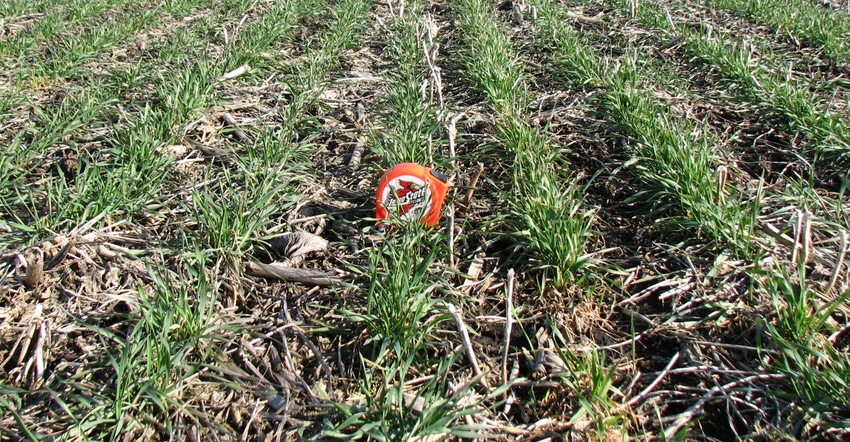August 9, 2018

In growing corn and soybeans, many factors are out of a farmer’s control. Commodity prices, trade issues, temperature and moisture are a few.
Iowa this year has experienced less-than-optimum weather conditions in most locations. Northwest and north-central Iowa have received excessive moisture, while farmers in southeast Iowa are experiencing drought conditions. While no one management strategy can cure all challenges, we need to move toward special practices on selected acres. I ask myself why we spend large sums of cash with site-specific technology for fertilizer, hybrids, lime and seeding rates, yet we rarely consider cover crops on specific sites. Few fields in Iowa have only one single soil type.
Most agronomists agree that cover crops reduce soil erosion. Numerous studies have been conducted and books written on the benefits of cover crops. Farmers often look for solutions in traditional locations. Simple solutions include purchasing seed with treatment to reduce nematodes in soybeans, using herbicides to reduce weed pressure in corn and bean fields, and spraying liquids (soil amendment products) to improve water infiltration into the soil. We often overlook the use of cover crops and the agronomic benefits they can provide to help solve these problems.
2 overlooked benefits
Two seldom discussed benefits from cover crops include weed suppression and increased water infiltration. Looking to the future of weed control, we will need to rely on other tactics besides applying herbicides. While herbicides are extremely effective, we often underestimate the effectiveness of a living crop, such as a cover crop, smothering out weed competition.
Before glyphosate came to the marketplace, drilled soybeans were used to manage weeds. However, planting into a living cover crop can give our intended row crop a head start on helping control weed pressure. In southwest Iowa, fields with fall-seeded cover crops have reduced infestations of winter annual weeds. We still need herbicides to maximize our intended crop productivity, but we can change the environment and confuse the weeds by planting cover crops.
Soil health is a hot topic currently in agronomy circles. The definition of soil health depends on who you ask. However, one fact is clear: The more structure the soil has, the better infiltration we observe. When crop rotations and tillage have less diversity, our soil has less structure.
With heavy spring rains in parts of Iowa this year, we need to ask ourselves if we had a living root structure in the soil to increase infiltration. How would that have influenced our corn or soybean planting date? Not everyone will agree on this issue, but just ask anyone who has used cover crops about water infiltration. They see an improvement in water soaking into the soil instead of running off the field.
Seed single species or cover crop mix?
Can one single type of cover crop provide all the benefits we ask of a cover crop? Mixed stands of cover crops often have increased benefits in terms of water infiltration. With brassicas and cereal grasses available as covers, we can take advantage of deep-rooted oilseed radishes and finer-rooted cereal rye.
When opportunity knocks, we often need to open the door. The challenges of the 2018 growing season may be the opportunity some of us need to plant cover crops on portions of the field that did not raise a cash crop this season. These areas would be available to plant early this fall without interference from the current row crop. Sometimes answers do not come from a book, as experience is the best teacher. Keep an open mind and think outside the box.
Several cost-share programs are available across the state if farmers wish to take advantage of funding for first-time cover crop users. Check with your local soil and water conservation district or Natural Resources Conservation Service. Also, visit the Midwest Cover Crop Council for a cover crop selection tool and other information to help with cover crop choices and related management decisions.
Saeugling is the ISU Extension field agronomist for southwest Iowa. Contact him at [email protected].
About the Author(s)
You May Also Like






